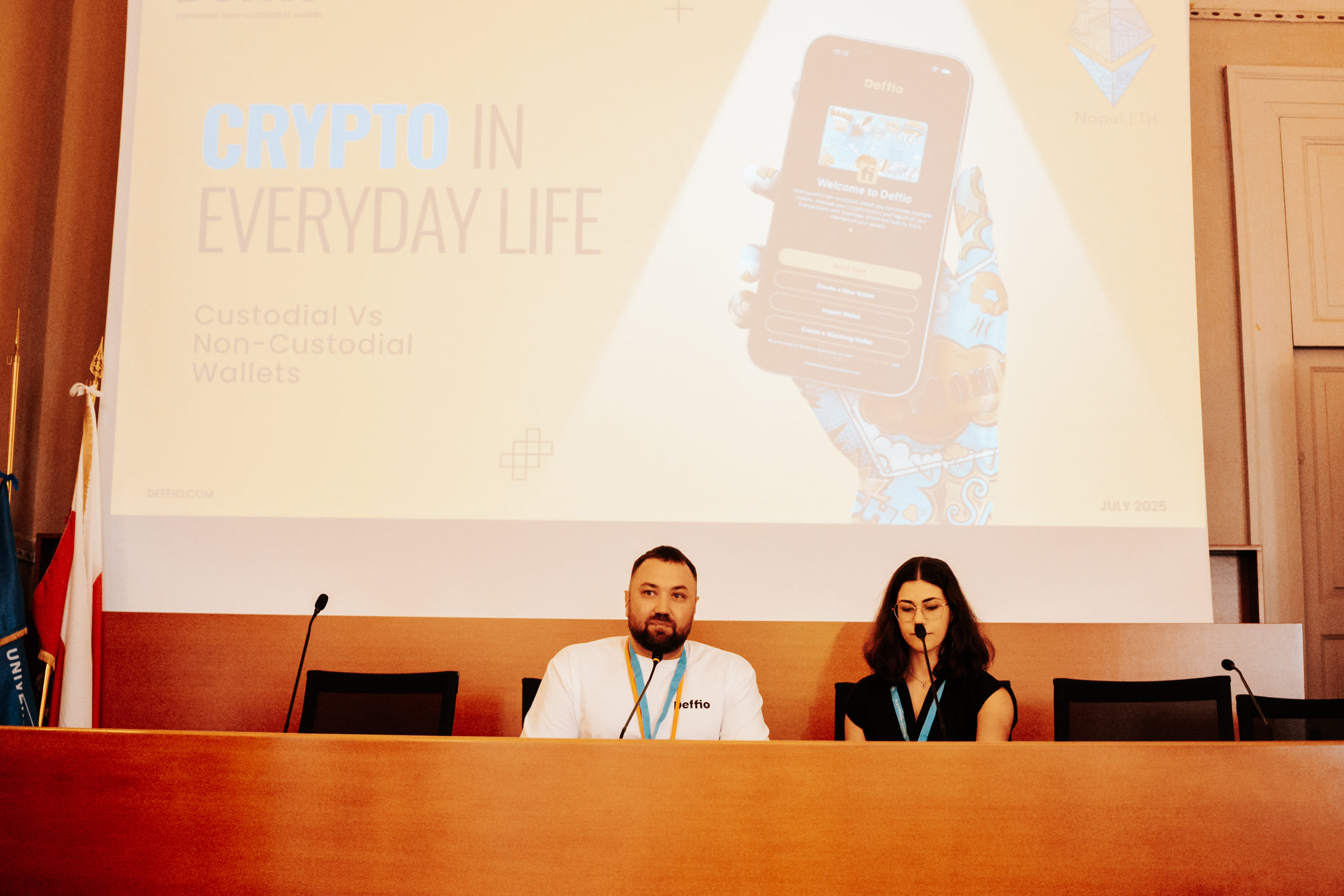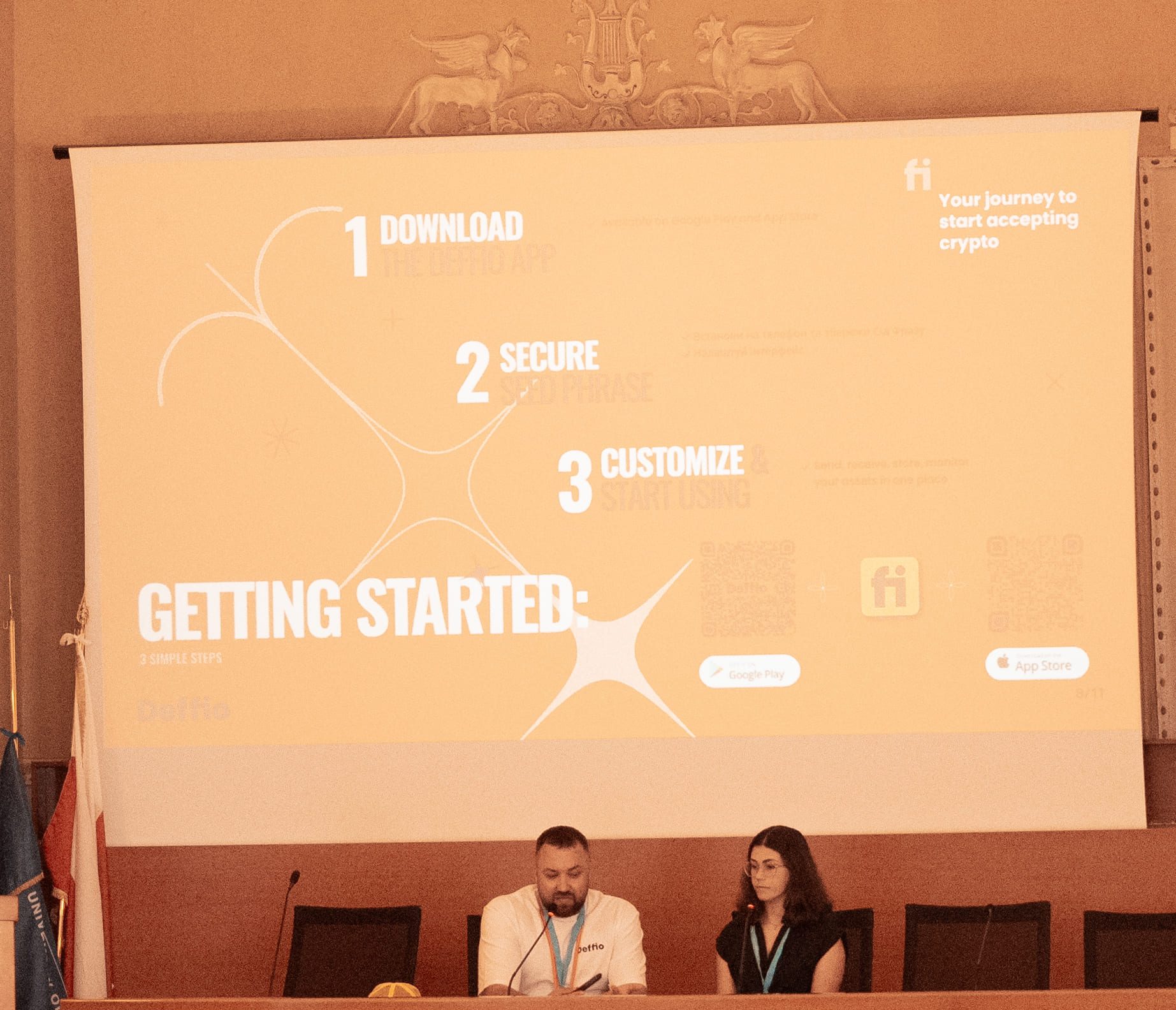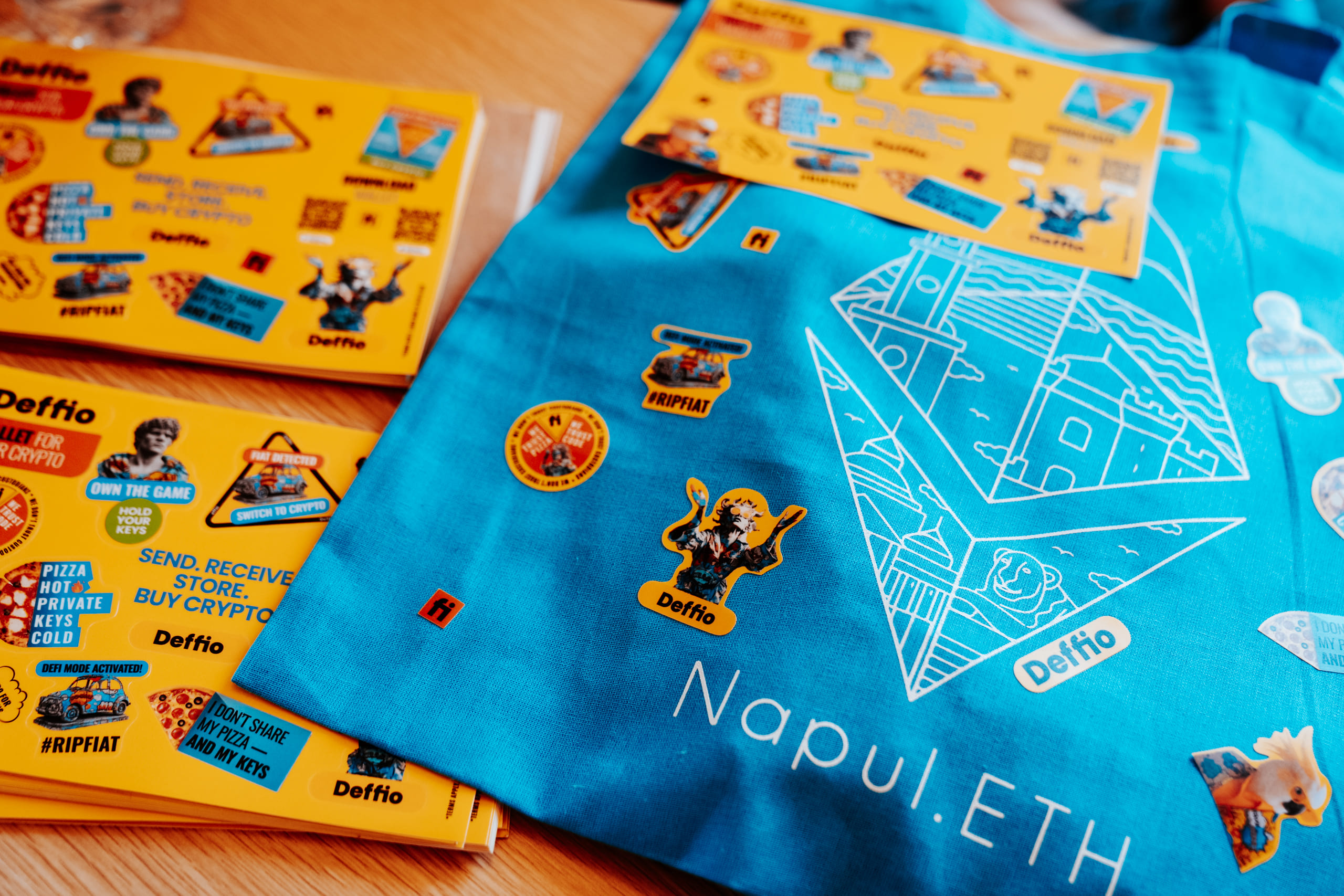At one of the key sessions during NapulETH 2025, Andrii Podobed, CBDO at a non-custodial wallet Deffio, shared his journey and perspective on how blockchain is transforming the way people interact with money — from personal finance to long-term freedom.

From Traditional Banking to Blockchain
Andrii has been in the crypto space since 2016, transitioning from a traditional background in banking. The shift began with a desire to diversify assets and explore new opportunities enabled by blockchain. His team launched an investment fund focused on blockchain startups, which brought both wins and hard lessons — eventually motivating them to build a product that empowers people to use crypto safely in everyday life.
“Many people don’t turn to crypto out of curiosity. They do it out of necessity. Excessive control over personal finances, frozen bank accounts, high transaction fees — these all push people to look for an alternative,” Andrii explained.
Custodial vs. Non-Custodial: Why It Matters
One of the core parts of his talk focused on the difference between custodial and non-custodial wallets. In custodial wallets, a third party holds your private keys — meaning you’re exposed to operational risks. If the platform is hacked or turns out to be a scam (as with FTX), users may lose access to their funds.
“For the past five years, we’ve been encouraging people to use non-custodial wallets. Initially, it was hard to explain. Today, thanks to better UX and accessibility, it’s a no-brainer.”
In non-custodial wallets, you own your private keys, and they are stored on your device or physical backup, making the user the true custodian of their funds.

Deffio: Designed for Everyday Use
Andrii also introduced Deffio crypto wallet — available on both App Store and Google Play stores. Users can store and back up their seed phrases, customize the interface, and perform core actions like buying with fiat cards (Visa/Mastercard), sending, and receiving crypto. The team is also working on implementing off-ramp options and crypto cards in the nearest future.

Is Crypto a True Alternative to Fiat?
“Yes, it is. You can already use crypto worldwide. From crypto cards to Apple/Google Pay support — there are many legal and convenient ways to spend and cash out crypto today. It’s becoming an easy, real alternative.”
However, he cautioned against jumping into trading too quickly:
“Don’t start with trading — you’ll lose money. First, learn how the blockchain works. Understand the essence of the products. Then start exploring the space.”
On Safety: Hot vs. Cold Wallets
When it comes to security, Andrii recommends using hot wallets for daily needs like trading or gaming — and cold wallets for long-term storage of investments. He also shared a personal story of losing funds after connecting a wallet to a suspicious Web3 site.
“Never connect your wallet to unknown games or dApps. Always double-check what you’re signing and where.”
The Italian Perspective
When asked about Italy’s crypto adoption pace, Andrii noted real progress in recent years.
“We see initiatives from Bocconi University in Milan, Nanabianca in Florence, and multiple local events and conferences. Italy is moving in the right direction — though still quite conservatively.”
This inspiring session at NapulETH reminded us that crypto is not just about investment or speculation. It’s about empowerment, access, and long-term resilience — and education is the bridge that will get us there.



